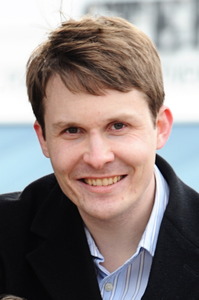 Brian Moore has been doing a fantastic job over at my previous blog, and his latest post on the doctor shortage is particularly good. Brian and I are both married to doctors who are currently suffering through residency, so we have a very personal perspective on what’s wrong with our medical system. Brian’s a little harsher than I would be, but this is basically right:
Brian Moore has been doing a fantastic job over at my previous blog, and his latest post on the doctor shortage is particularly good. Brian and I are both married to doctors who are currently suffering through residency, so we have a very personal perspective on what’s wrong with our medical system. Brian’s a little harsher than I would be, but this is basically right:
The medical profession is not very forgiving to part-time employment (there are high fixed operating costs). You can’t phase out slowly like you might be able to with other jobs — and being a physician in your 50’s means you have been working very hard for at least 28 solid years. The “lifestyle” issue is very big for both men and women.
As we value leisure and lifestyle more and more, becoming a doctor is becoming less and less appealing. Not everyone is willing to accept major curtailment of friends, family, hobbies, relaxation, sleep, dating and kids during the best years of their life — and make no mistake, that is what you accept if you are going to medical school and residency. Especially during internal medicine residencies (the one all those “primary care physicians” we want to have will be enduring) you are looking at 70-100 hour work weeks (yes, it’s “capped” at 80 hours officially, but that’s like saying drugs are illegal, so no one will have them).
At the most competitive residency programs, working 100 hours a week doesn’t mean just losing the things above, it means losing things like sitting down, eating, any sleep at all, and going to bathroom when you need to. If you want some scary statistics, look up how many residents abuse alcohol, prescription drugs, are on anti-depressants, are in therapy, etc…
The only reason we’re not facing an even more massive shortage right now is that residency programs are highly incentivized (up to including yearly 6 digit bribes from medicaid/care per resident) to retain residents they’ve conned into coming to their programs, and so have erected very high barriers to exit, or even changing specialties. Plus there are natural barriers, such as the sunk cost fallacy that “all those years would be wasted if I left” and your student loans, which can range up to a quarter of a million or more.
The sharp limits on the number of people who are permitted to be doctors means that they are simultaneously overworked and (after enduring 3-7 years of residency) overpaid. If they were given the option, many doctors would choose to work fewer hours in exchange for lower wages, but the way the medical profession is structured makes it difficult to do that. Meanwhile, there are lots of people, both here and abroad, who would like to enter the medical profession in the US but are prevented from doing so by a variety of legal restrictions. If Obama is serious about “bending the cost curve” over the long run, one of his top priorities ought to be expanding the number of doctors in the US—this could be accomplished both by liberalizing licensure here at home, and by liberalizing immigration rules to allow more foreign doctors to practice here. Of course, he won’t do anything of the sort because the medical profession is well-organized to resist any reforms that might place downward pressure on their wages.



4 Responses to Bending the Cost Curve on Health Care